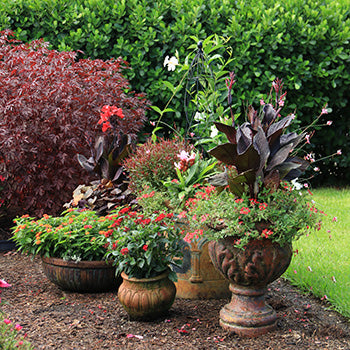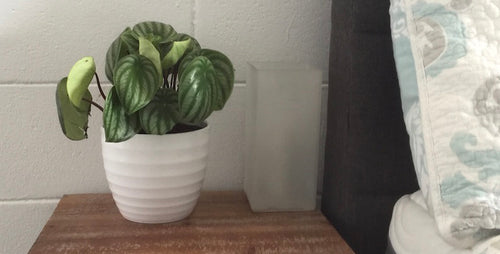
The fiddleleaf fig is the “it”
plant for the decade proclaimed an article in the New York Times.
"Every era has its trendy houseplant. In the 1950s and ’60s, it was the African violet. In the ’70s, it was
spider plants trailing out of macramé hangers. In the ’80s and early ’90s, it was the potted ficus. The aughts gave rise
to mossy plants in terrariums and glass jars. This decade belongs, undeniably, to the fiddle-leaf fig."
For
plant lovers who admire the elegant and statuesque, a fiddleleaf fig is the Holy Grail in plant ownership.
Ficus lyrata. Say it twice and relish how poetic it sounds. How the name rolls off the tongue, both exotic and
lyrical. Even the common name, fiddleleaf fig, evokes both music and sensuous food.
Argh! So why is this
plant so finicky?
Let’s not sugar coat it. Fiddleleaf fig is a bit of a diva. I had one on my screened porch. When it dropped one of
its giant leaves, the crashing sound would wake up my Jack Russell terrier, Pez, from a sound nap on the couch. Each
leaf that fell off sounded like failure. So what did I do wrong? After doing a little research, I discovered my
fiddleleaf fig wasn't getting enough light.
Here’s how to accommodate the needs of a fiddleleaf fig. I did
it. So can you.

LIGHT: Start with the right light.
Everyone tells you this, but you really have to listen if you want to have a
fit-as-a-fiddle, fiddle leaf fig. This plant likes bright indirect light or bright filtered light. This means that you
can place your fiddleleaf near a south- or east-facing window, but it can’t be in glaring sunlight all day long.
(Reality check: Keep in mind that when you see them in magazine spreads next to a bright window, it might just be that
it was placed there for the photo.)
Make sure leaves are dust free; wipe them off with a damp cloth every
couple weeks. Dust inhibits photosynthesis which could affect your plant.
Light-related Symptoms
Not enough light: Leaves may turn yellow, develop brown spots, or drop off. Move to a new location.
Too much light: Leaves will burn and turn brown. Move to a new location.
WATER: Don’t overwater. Don’t underwater.
Just like light, watering has to be just right. If the soil is too wet, the roots with suffocate--they can’t breathe in soggy soil. Fiddleleaf also doesn’t like it when you forget to water. If the soil totally dries out, the plant becomes stressed. This plant prefers regular watering during its growing season in spring and summer. And from fall to late winter, reduce watering.
Water-related Symptoms
Not enough water: Leaves turn brown around the edges and may drop off. Water consistently when the top inch of soil feels dry.
Too much water: Leaves turn brown in the middle and at the edges and may drop off from the bottom of the plant. Don’t water plant until soil dries out.
AIR TEMPERATURE: Fiddleleaf figs are a little fussy about air temperature.
Plants prefer living in rooms that are 65 to 75 degrees Fahrenheit. They will react badly if the air temperature around them falls below 50 degrees Fahrenheit. They don’t like hot dry air, such as what they might experience sitting beneath an air vent in the winter. Likewise they don’t like cold drafts, so keep them away from areas where they can be blasted by a cold draft in the winter, say near a door.
Temperature-related Symptoms
Too cold and drafty: Leaves turn brown and may drop off. Move to a
warmer, draft-free location.Too warm and dry: Leaves may turn brown. Add more humidity.
MOVING YOUR PLANT: Fiddleleaf figs love consistency.
If you move your plant, it may take a bit of time for it to adjust to its new surroundings. Unlike other ficus which drop lots of leaves if stressed from a move, Ficus lyrata will drop leaves one at a time.

















